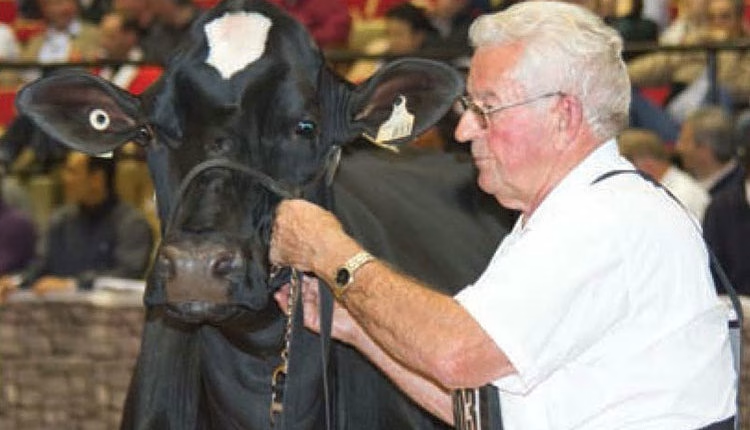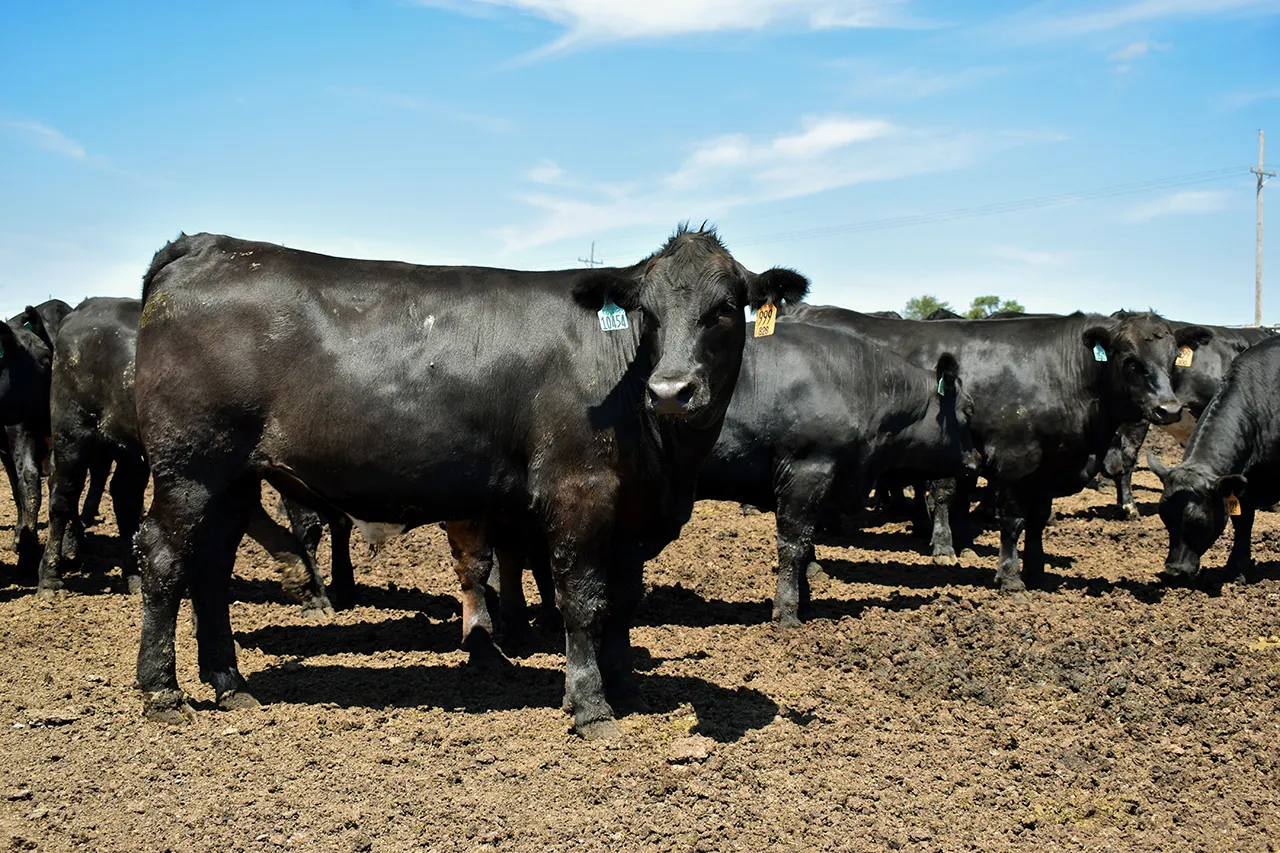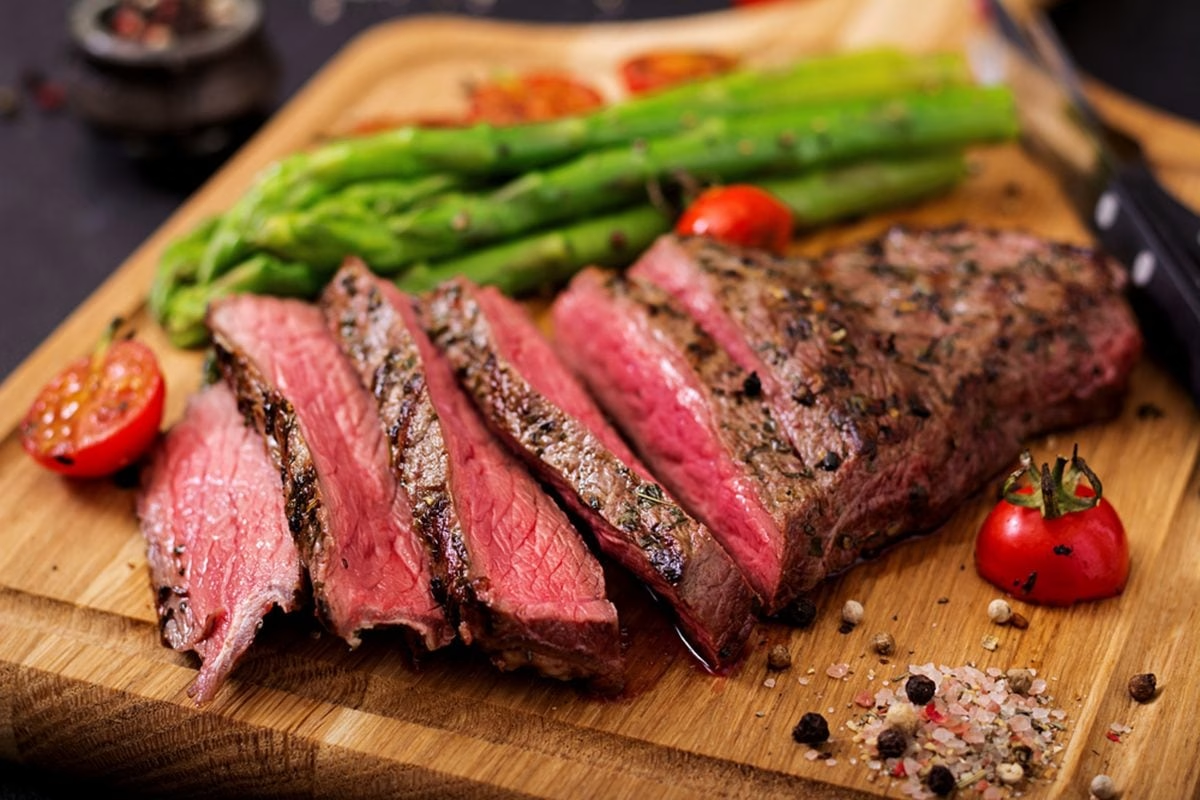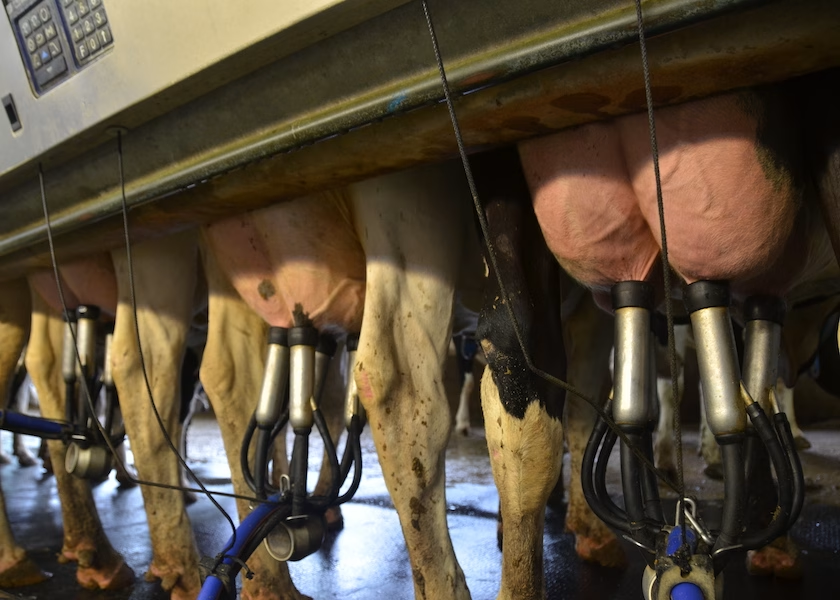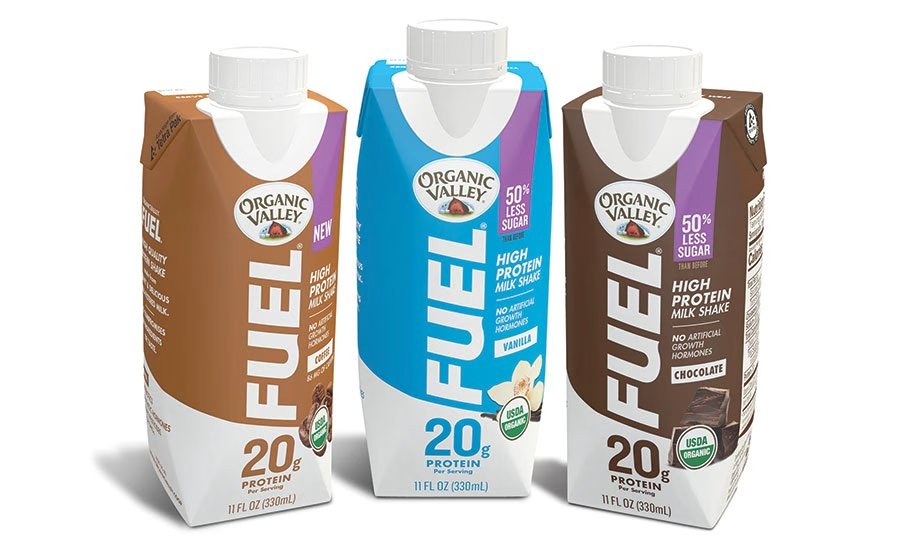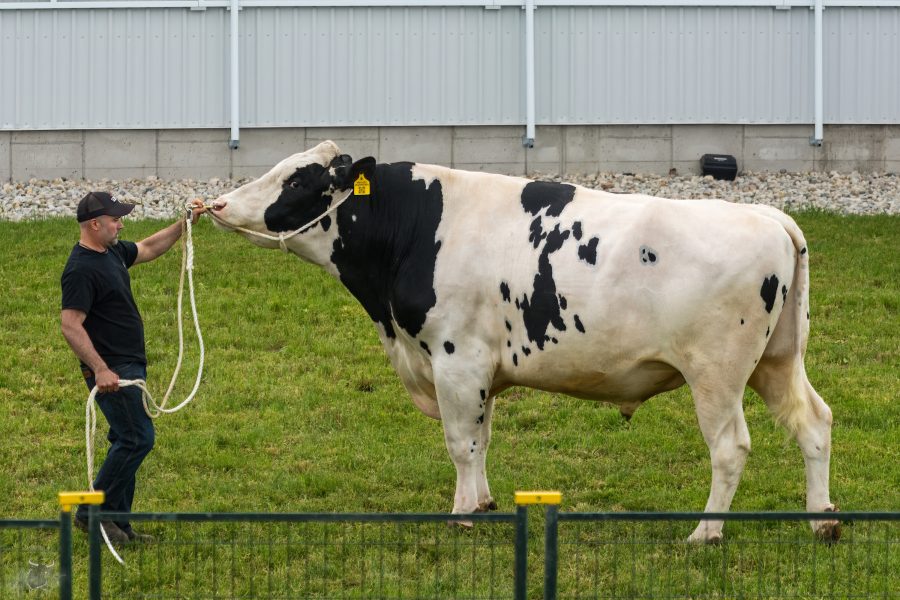Learn how Bel Holstein turned family love for cows into European dairy success. What hurdles did they overcome, and what’s their secret to thriving?

Photo by Dominique Savary
In the beautiful landscapes of Italy, where old traditions meet new ideas, the story of Bel Holstein unfolds like a well-aged wine—rich and celebrated. It all started from humble beginnings, with three brothers, Mauro, Giuseppe, and Piero. Driven by youthful dreams and the wise advice of their father, Renato, they embarked on a remarkable journey. Inspired by their family’s deep roots in caring for animals, they began participating in Holstein shows in the late 1980s. What started as a small effort soon became a mission that pushed them to the top of European dairy farming. Mauro remembers, “Our first heifer impressed everyone back in 1987, and that moment sparked a dream,” highlighting the early ambitions and bold moves of those early years. Through hard work, careful breeding, and a strong focus on quality, Bel Holstein symbolizes pride in Italy’s farming history. This success shows their dedication—a mix of family passion and industry skill that continually shapes the future of Holstein farming. This story isn’t just about farming; it’s about preserving a legacy and ensuring that every cow, show, and sale is marked by excellence.
A New Dawn in Dairy: From Piemontese Traditions to Holstein Triumphs

Bel Holstein’s story begins with a family known for breeding cattle, specifically the local Piemontese breed. This breed was once used for dairy and beef but is now only used for beef. In the early 1980s, the family started breeding Holsteins, motivated by ambition and the excitement of winning in dairy farming.
This change came with challenges. Before the internet, the Bel family had to rely on magazines like the Holstein Journal to see the top cows from big contests like the Royal and WDE. Their efforts were driven by a genuine love for cattle and dreams of having a champion at the Cremona show, Italy’s top event for Holsteins.
1987, their hard work paid off when they entered their first official Holstein show. Their debut was impressive as a Chairman’s daughter won her class, proving their careful breeding and preparation were successful. This win not only put Bel Holstein on the map but also confirmed the family’s belief in balancing show participation with commercial potential, as suggested by Renato. This first triumph marked the beginning of their respected place in Holstein breeding.
Family Harmony: The Heartbeat of Bel Holstein’s Success

Mauro and daughter Greta Beltramino. (Photo Carl Saucier)
Bel Holstein’s story is a testament to the power of family, where everyone plays a crucial role in shaping the farm’s vision and executing its daily tasks. At its core are two brothers, not just passionate but also skilled, leading the farm into the future. One brother finds joy in working in the barn with the help of two workers and his daughter Greta, a sign of the new generation’s eagerness to learn. With assistance from his sons, Giulio, Paolo, and Andrea, the other brother manages the fields and the biogas plant, ensuring this vital part of the farm runs smoothly. Francesco, the eldest son, his girlfriend Chiara, and their cousin Cecilia take on the intricate task of clipping and fitting the cows—a skill passed down and improved each generation. This family’s dedication and love for their work are truly inspiring, serving as a beacon of hope for the future of dairy farming.

Francesco Beltramino clipping at WDE Madison
It’s about more than today; Giuseppe, though not involved in day-to-day farm work, still shares his experience and contacts from around the world, providing vital continuity and strong ideas. Even those who don’t work daily, like his hardworking wife Barbara and their youngest daughter Emma, contribute during shows and when there are barn visits. This teamwork, blending youthful energy and experienced guidance, reflects the farm’s mission: to strive for excellence in dairy farming, staying strong and hopeful as agriculture evolves.

Giuseppe Beltramino Judging at the 2017 Italian National Show
Triumphs on the Global Dairy Stage: Bel Holstein’s Legacy of Excellence

Bel Holstein has made a name for itself nationally and internationally with impressive achievements at significant events like the Cremona Show and the Swiss Expo. The 2004 Cremona Show was pivotal, where Bel Mtoto Diana was crowned Grand Champion. This win, the highest honor at the show, showcased Bel Holstein’s intense breeding and dedication. Al-Pe Doriana won the Reserve Grand Champion title, proving its strength in Italian dairy circles and making a mark with its continuous high performance.
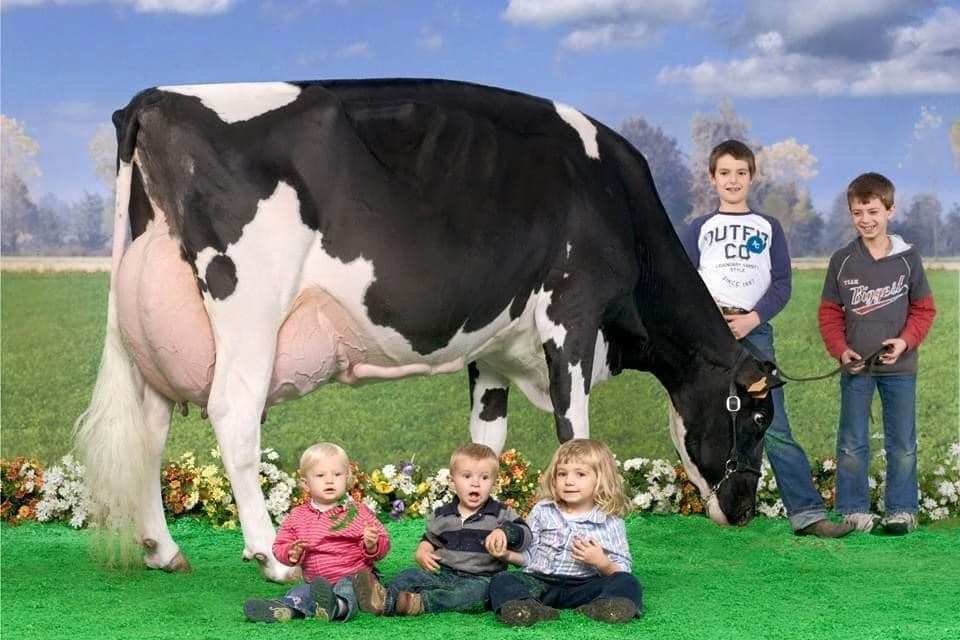
Al-Pe Doriana became a symbol of success, achieving an EX97 classification, which boosted Bel Holstein’s reputation for quality and reliability—a sign of trust for future buyers and partners—Fast-forward to the 2017 Swiss Expo, where their skill was recognized internationally. Winning Junior Champions in the Red & White and Holstein categories, Reserve Grand Champion, and Honorable Mentions showed their strength beyond Italy.
These achievements are more than just trophies; they have helped Bel Holstein grow and increase their brand’s fame. As their reputation grew, so did their business opportunities, creating partnerships and entering new markets. These successes have made Bel Holstein a go-to name for international dairy colleagues and clients, all eager to connect with such a high-quality producer. Their commitment to developing champions ensures each show ring appearance catches the eye and sets up long-term success in dairy farming.

Resilient Roots: Navigating the Cycles of Dairy Farming with Bel Holstein
The dairy industry is fraught with surprises and difficulties that can test even the most experienced farmers. Bel Holstein’s ability to adapt and remain steadfast has seen them through these challenges. Over the years, they have navigated economic troubles, fluctuating milk prices, new technology, and rule changes. Yet, their approach has remained optimistic but cautious, blending hope with strategic planning. This resilience is a testament to their commitment to the industry and confidence in weathering any storm.
When dealing with the ups and downs of dairy farming, Bel Holstein stays calm, not letting good or bad times affect their plans too much. This mindset is evident in their daily work and their plans for the future. They can adjust by using family and community support and trying new ideas, showing they understand how the industry changes.

Du Bon Vent Inkapi EX-97-IT
Brawler x VG-85 Knowledge x Du Bon Vent Epopee VG-89-FR
Res. Sr. Champion & HM. Grand Champion Montichiari 2019
Grand Champion Verona Dairy Show 2022
Their success partly comes from watching industry trends while staying true to their traditional values. By building strong connections within their community and industry, Bel Holstein has shared and learned knowledge that helps them stay strong. This network, which includes other farmers, industry experts, and local authorities, also supports them during more considerable industry changes or local problems, like seasonal diseases or changing consumer habits.
At the heart of Bel Holstein’s strength is their profound love for what they do. They are patient and determined, going above and beyond their daily tasks. They understand the importance of consistently caring for their cows, ensuring their health and productivity despite external pressures. This level of dedication is not just admirable. Still, it also sets a high standard for others in the dairy community, fostering a culture of respect and appreciation for the animals at the core of their livelihood.

The Art of Balance: Breeding for Beauty and Productivity at Bel Holstein
Bel Holstein’s breeding strategy is about creating beautiful and productive cows. This involves picking bulls that improve udders without going to extremes in production and type. By avoiding extreme traits, Bel Holstein keeps a herd that works well and looks good. They believe preparation for shows starts at birth, giving early care to calves so they perform well in milk production or the show ring. Their herd classification proves the success of their strategy, with 15 cows rated Excellent (EX) and 59 Very Good (VG), showing their focus on improving genetics and managing livestock.
Bel Holstein is committed to balancing beauty with efficiency. They carefully pick bulls that enhance milk yield and cow shape. These bulls are chosen not for extreme production but for improving udder quality, which is crucial for a cow’s lifespan and productivity. However, there’s a challenge with excessive height, which can look impressive in shows but cause management issues.
Finding this balance requires planning and continuous effort. By keeping a herd that shows ideal Holstein traits without losing function, Bel Holstein shows its dedication to careful breeding practices. By avoiding too much focus on height traits, they ensure the herd stays healthy and practical, keeping beauty and productivity together without one outshining the other.

Embracing the Human Element: Bel Holstein’s Commitment to Tradition in a Technological Age
While technology is changing dairy farming, Bel Holstein shows the value of traditional methods. While many farms use machines for milking and feeding, Bel Holstein relies on the skills gathered over many years.
The choice to avoid advanced technology isn’t because technology is bad but because of the special connection between farmer and cow. Machines often need help to replace this connection. This approach emphasizes a key idea: human passion is key to excellence.
Understanding animal behavior can be as insightful as using any digital tool. Bel Holstein believes machines can only replace the expertise gained from years of hands-on experience. This helps them effectively care for their cows and meet their needs with great understanding.
At Bel Holstein, focusing on observing and engaging with the herd is central to their success. By sticking to these methods, they keep their herd healthy and productive. This shows that even in a high-tech world, human involvement is crucial for success in dairy farming.

𝐁𝐞𝐥 𝐁𝐚𝐠𝟐 𝐓𝐚𝐧𝐭𝐮𝐦 𝐆𝐞𝐦𝐢𝐧𝐢𝐚𝐧𝐚 𝐕𝐆𝟖𝟔 – A promising 1st calf from the family of the one and only 𝐷𝑢 𝐵𝑜𝑛 𝑉𝑒𝑛𝑡 𝐼𝑛𝑘𝑎𝑝𝑖 𝐸𝑋97!!
Bridging Tradition with Innovation: Bel Holstein’s Vision in the Evolving Italian Dairy Landscape
Bel Holstein stands firm at the crossroads of tradition and innovation in Italy’s dairy industry. The family is focused on a future where they can return to international events. These beloved fairs and shows provide more than competition; they offer essential networking and business opportunities. For Bel Holstein, visibility and reputation at these events highlight their exceptional breeding skills and excellent care practices.
Bel Holstein’s goals extend beyond the show rings. In Italy, with its varied approaches to dairy farming, the farm envisions a future where both large operations and small farms prosper. This vision depends on adding value to each operation. Whether through direct milk product sales or enhancing their livestock and genetics, Bel Holstein is committed.
It is key to maintaining their strong genetic portfolio. Bel Holstein breeds for both beauty and productivity, ensuring they meet the needs of local and international markets. Their dedication to improving their herd makes them a top contender in the dairy world.
Bel Holstein also wants to strengthen ties with the global dairy community. New collaborations and learning opportunities will emerge as travel and events normalize post-pandemic. The family values knowledge from other respected breeders and sees this as a chance for shared growth and success.
Bel Holstein blends tradition with ambition, valuing past practices while exploring new paths. Their lasting impact on dairy farming is not just based on past successes but also on a forward-thinking approach that embraces local traditions and global progress.

𝐁𝐞𝐥 𝐂𝐡𝐢𝐞𝐟 𝐄𝐬𝐭𝐞𝐫𝐢𝐧𝐚 𝐄𝐗𝟗𝟐, 3rd lactation 4 years old, in her working clothes! Esterina is a Chief granddaughter of 𝑃𝑜𝑧𝑜𝑠𝑎𝑎 𝐺𝑜𝑙𝑑𝑤𝑦𝑛 𝑆𝑜𝑛𝑖𝑎 𝐸𝑋94. Owned with Bag2 & All.Nure
Bold Aspirations and Formidable Resilience: Navigating Bel Holstein’s Future in Dairy Farming
Bel Holstein is looking towards the future with the same ambition that’s marked its past successes. Though it has faced global challenges like the COVID-19 pandemic and regional issues like the Blue Tongue disease, these experiences have only strengthened its resolve. It is eager to return to international shows and fairs, which will help it showcase its cattle and build essential business relationships. As these events happen regularly again, Bel Holstein aims to cement and grow its presence globally, showcasing cattle that excel in looks and production.
Bel Holstein sees a bright future for dairy farming in Italy, with room for both large and small farms. Their focus is on adding value through high-quality genetics and excellent animals. By selling milk and their herd’s genetics, they stick to a model that values direct sales and show-quality animals. This approach helps them stay competitive in changing industry trends.
For Bel Holstein, innovation isn’t just about new technology. It’s also about quality human interaction and skilled work. By maintaining their herd quality and engaging with the dairy community locally and internationally, they’re ready to adapt to the changing dairy landscape. They fine-tune their unique selling points, balancing tradition with modern farming needs. This strategy helps Bel Holstein stand out for sustainability, quality, and excellence in the Italian dairy sector and inspires their commitment to progress.

𝐁𝐞𝐥 𝐂𝐡𝐢𝐞𝐟 𝐆𝐮𝐞𝐧𝐝𝐚𝐥𝐢𝐧𝐚 𝐕𝐆𝟖𝟕
Guiding Stars: Mentorship and Legacy at Bel Holstein
Mentorship has been crucial in shaping Bel Holstein’s journey, supporting its success, and encouraging new ideas. In their early years, Farm Alpag in Alessandria had a significant influence. Led by Luigi Manfredini, known for his attention to detail in show preparations, the Bel Holstein team learned the art of showing dairy cattle. These lessons in precision and dedication continue to guide their high standards today.
Their talks with experts like Donald Dubois also provided valuable insights. Dubois was a respected figure in the industry, moving from fitter to judge. The Bel Holstein team admired his skills and dedication, which matched their values. His example highlighted the importance of expertise in every role, shaping their approach to caring for their cattle and the farm’s legacy.

𝐉𝐀𝐂𝐎𝐁𝐒 𝐀𝐋𝐋𝐈𝐆𝐀𝐓𝐎𝐑 𝐁𝐀𝐕𝐀𝐑𝐈𝐀 𝐕𝐆𝟖𝟕 Bavaria is an Alligator, daughter of JACOBS HIGH OCTANE BABE EX96 that Bel Holsteins owns with Ferme Jacobs, Elmvue Farms and Cioli Farms!
Today, Ferme Jacobs is admired for its success in showings and farm operations. Their mix of new ideas and traditional values inspires Bel Holstein to achieve a similar balance of beauty and productivity. This effort aims not just for awards but also to improve their herd and farming practices.
These mentors and herds teach Bel Holstein to respect tradition, embrace innovation, and strive for quality. Their lessons are reflected in daily work, from the barn to the field and on international stages, forming a legacy built on inspiration and hard work.
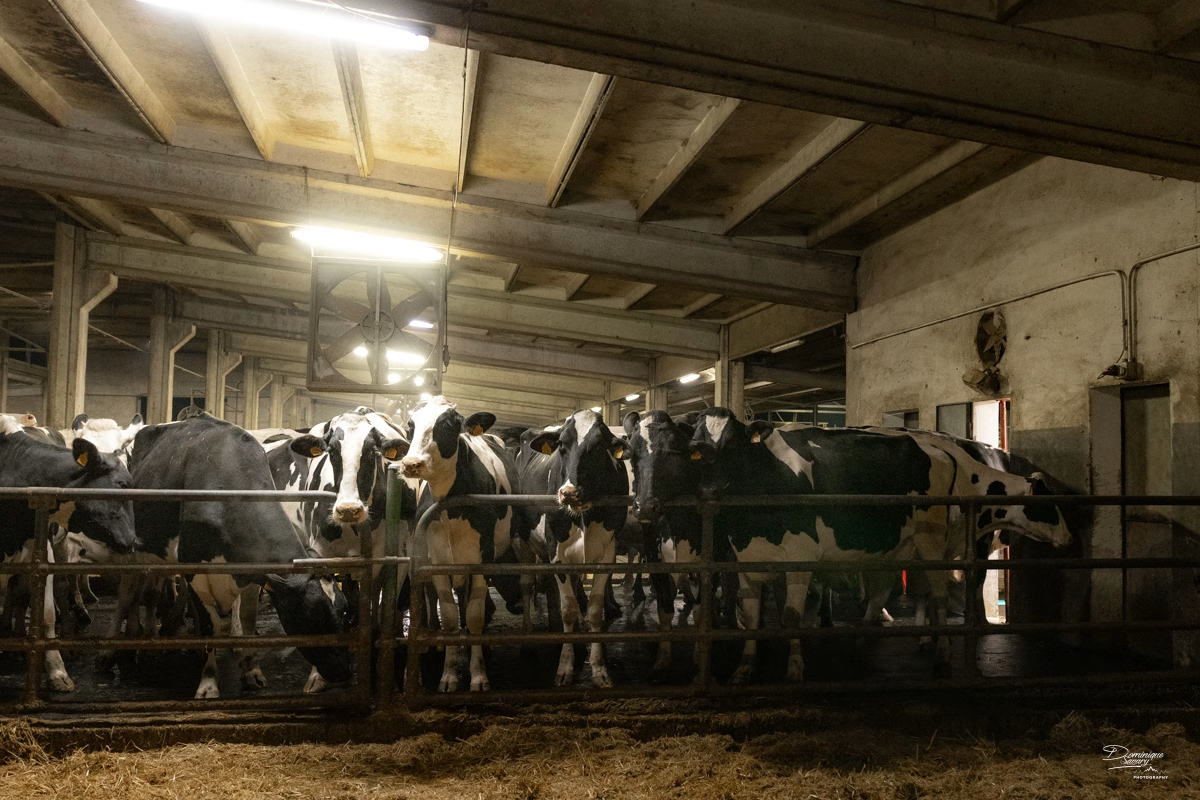
Navigating the Twin Pillars of Success in Dairy Showmanship and Sales
Aspiring dairy cattle breeders starting their journey in the busy world of cattle showing and marketing should listen to advice from years of hands-on experience. The key to success lies in showing and selling skills. These two aspects work together and are vital for your reputation and business.
First, be ready to sell even your best animals. Keeping a flexible inventory is essential for your business and reputation. If a buyer offers a reasonable price, taking it can lead to good relationships and financial success. Each sale helps build your name in the industry.
It’s also important that your show successes lead to broader recognition. Winning in the show ring is excellent, but the real work is ensuring your animals impress outside the ring, too. Every detail is essential, from preparation before the event to how your cattle look throughout the show. Please keep them in top condition so everyone, from other breeders to potential buyers, is impressed by their quality. This approach will strengthen your reputation and expand your influence in the dairy world, establishing you as a dedicated and skilled breeder.

BEL BYWAY CASHMERE EX 93 3*, Cashmere is a 5 years old Byway out of Du Bon Vent Inkapi EX97
Showcasing Excellence: Bel Holstein’s Global Dairy Impact Through Shows and Social Media
Shows have been crucial for Bel Holstein, highlighting their top-notch breeding skills and strengthening their reputation worldwide. Events like the Swiss Expo and the Cremona show have given them immediate attention from breeders, buyers, judges, and a wider audience through digital connections. These shows display Bel Holstein’s excellent cattle pedigree and preparation and reflect the expertise and commitment at the heart of their success.
Social media has made this impact even bigger, turning these events into ongoing stories with real-time updates. Platforms like Instagram and Facebook allow Bel Holstein to share live events, stunning pictures of their award-winning cattle, and interesting stories that draw international audiences. This online presence helps them reach potential buyers and fans who might not know about them otherwise.
Additionally, the personal connections made at these shows, where people share a passion for top-quality dairy cattle, often lead to lasting partnerships. These relationships go beyond simple transactions, creating networks that connect breeders, sellers, and global partners. These connections offer markets for cattle and shared knowledge and innovation, which are key to growing in a changing global dairy market.
Ultimately, combining in-person showmanship with innovative social media use has boosted Bel Holstein’s profile, making it more marketable in a competitive field and strengthening relationships that enhance its business reach far beyond Italy’s borders.

From L to R:Bel Boeing Gondola VG87 EX MS 𝐽𝑢𝑛𝑖𝑜𝑟 𝐶ℎ𝑎𝑚𝑝𝑖𝑜𝑛 𝐶𝑟𝑒𝑚𝑜𝑛𝑎 𝐼𝑛𝑡𝑒𝑟𝑛𝑎𝑡𝑖𝑜𝑛𝑎𝑙 𝐷𝑎𝑖𝑟𝑦 𝑆ℎ𝑜𝑤 2023, 𝑅𝑒𝑠𝑒𝑟𝑣𝑒 𝐽𝑢𝑛𝑖𝑜𝑟 𝐶ℎ𝑎𝑚𝑝𝑖𝑜𝑛 𝑁𝑎𝑡𝑖𝑜𝑛𝑎𝑙 𝑆ℎ𝑜𝑤 2023 – Bel Hotline Georgia VG86 𝐽𝑢𝑛𝑖𝑜𝑟 𝐶ℎ𝑎𝑚𝑝𝑖𝑜𝑛 𝑆𝑤𝑖𝑠𝑠𝐸𝑥𝑝𝑜 2024 – Bel Chief Guendalina VG86 𝑅𝑒𝑠𝑒𝑟𝑣𝑒 𝐽𝑢𝑛𝑖𝑜𝑟 𝐶ℎ𝑎𝑚𝑝𝑖𝑜𝑛 𝑆𝑤𝑖𝑠𝑠𝐸𝑥𝑝𝑜 2024 𝑅𝑒𝑠𝑒𝑟𝑣𝑒 𝐽𝑢𝑛𝑖𝑜𝑟 𝐶ℎ𝑎𝑚𝑝𝑖𝑜𝑛 𝐶𝑟𝑒𝑚𝑜𝑛𝑎 𝐼𝑛𝑡𝑒𝑟𝑛𝑎𝑡𝑖𝑜𝑛𝑎𝑙 𝑆ℎ𝑜𝑤 2023 𝐻𝑜𝑛𝑜𝑟𝑎𝑏𝑙𝑒 𝑚𝑒𝑛𝑡𝑖𝑜𝑛 𝐽𝐶 𝑁𝑎𝑡𝑖𝑜𝑛𝑎𝑙 𝑆ℎ𝑜𝑤 2023
The Bottom Line
Bel Holstein has led Holstein breeding from humble beginnings on their family farm. Their journey shows the impact of passion, dedication, and a drive for excellence. With success at international shows and strong values, Bel Holstein offers essential lessons in perseverance and adaptation.
Their story highlights the balance between traditional methods and modern innovation and the role of the family in building success. Bel Holstein excels in careful care and imaginative breeding, demonstrating the global reach of good marketing and participation in shows and online.
As dairy farming changes, Bel Holstein reminds us that success relies on strong foundations of passion and commitment. Their legacy challenges us to consider how our goals can help shape the future of dairy farming. Tradition and progress will work together in the future, powered by a commitment to quality and excellence.
Key Takeaways:
- Bel Holstein’s origin story is deeply rooted in family traditions, evolving from a predominantly Piemontese background to becoming a notable Holstein breeder.
- Key family members contribute distinct roles, from barn management and fieldwork to show preparations and strategic business development.
- Significant accomplishments include notable show victories and the development of high-ranking cows, providing substantial social proof within the industry.
- Bel Holstein’s breeding strategy emphasizes a balance of beauty and productivity, focusing on udder improvement while avoiding extreme traits.
- The farm adopts a traditional approach to operations, valuing hands-on work and animal care over technological solutions.
- Future aspirations include expanding international recognition through participation in significant events and leveraging diversifying opportunities in the dairy industry.
- Mentorship and learning from acclaimed breeders have been pivotal in shaping Bel Holstein’s breeding and show strategies.
- Shows serve as a crucial platform for marketing and enhancing global recognition, with the added benefit of social media exposure.
Summary:
Bel Holstein is an Italian family-owned dairy farm that started in the late 1980s, driven by the passion of three brothers, Mauro, Giuseppe, and Piero, inspired by their father’s love for cattle. Today, it’s a leader in European dairy farming, focusing on breeding beautiful and productive cows. Despite challenges like COVID-19 and Blue Tongue disease, the farm remains dedicated to blending tradition with innovation in Italy’s dairy industry, adding value through direct milk product sales and enhancing livestock genetics. They aim to succeed by continuing their presence at international shows and fairs, all while ensuring quality and sustainability in the sector.
Learn more:
- How Hanover Hill Holsteins Revolutionized the Dairy Breeding Industry
- Expo Bulle 2024: The Swiss National Holstein Show That Set New Standards
- The Stars Shine at the 2014 World Dairy Expo
 Join the Revolution!
Join the Revolution!
Bullvine Daily is your essential e-zine for staying ahead in the dairy industry. With over 30,000 subscribers, we bring you the week’s top news, helping you manage tasks efficiently. Stay informed about milk production, tech adoption, and more, so you can concentrate on your dairy operations.







 Join the Revolution!
Join the Revolution!


